
Roots
Consider the deep rhythm of a communal braiding session, fingers moving with practiced grace, a story passed down through generations not just in spoken word, but in the very act of shaping strands. Imagine the subtle scent of shea butter, warmed by ancestral hands, as it ministers to a scalp, a tradition stretching back further than recorded time. For those whose lineage traces through the Black and mixed-race experience, hair is never simply an adornment; it serves as a living archive, a repository of resilience, a conduit to the past. The question arises, then, with a quiet yet persistent voice ❉ can the careful lens of contemporary scientific study truly affirm the deep wisdom held within these traditional textured hair rituals?
To answer this, we must first recognize hair’s very make-up, a marvel of biological design. Each individual strand, particularly those that coil and curve in varied patterns, possesses a unique architecture. The Hair Shaft emerges from its follicle, a structure embedded within the skin. For textured hair, this follicle often takes on an elliptical or flattened shape, influencing the helical nature of the strand itself.
This shape contributes to the hair’s distinctive spring, its vibrant curl. Keratin proteins form the backbone of the hair, arranged in a way that gives strength and elasticity. The distribution of melanin, the pigment that lends hair its spectrum of color, also influences its physical characteristics. Modern investigation, relying on microscopy and chemical analysis, allows us to peer into this microscopic world, confirming what traditional practitioners observed through touch and experience ❉ textured hair is a category unto itself, requiring specific modes of care.
Early human ancestors, residing in regions with intense sun, developed hair textures that provided an adaptation for protection. Evolutionary biologists theorize that Afro-textured hair adapted over millennia to shield the scalp from ultraviolet radiation, its spiraled structure permitting air circulation (Caffrey, 2023). This ancient environmental interaction laid the groundwork for care practices that inherently respected the hair’s protective role.
Traditional textured hair rituals, often spanning generations, carry a profound, intuitive understanding of the hair’s unique biological requirements, long before scientific instruments offered their revelations.

The Architecture of Ancestral Strands
Hair’s anatomy, viewed through both ancestral wisdom and modern examination, tells a compelling tale. The outer protective layer, the Cuticle, composed of overlapping scales, guards the inner Cortex. In highly coiled hair, these scales might not lie as flat as on straighter hair, potentially leading to increased susceptibility to moisture loss or physical damage if not tended with mindful hands.
The cortex, where most of the hair’s strength resides, contains bundles of keratin. Differences in keratin distribution and arrangement contribute to the various curl patterns we witness across Black and mixed-race communities.
Understanding hair’s growth cycle provides another point of convergence between ancient insight and current biological knowledge. Hair progresses through phases ❉ Anagen (growth), Catagen (transition), and Telogen (resting). Traditional care practices, such as gentle handling, regular cleansing with natural substances, and protective styling, implicitly supported the anagen phase by minimizing breakage and stress on the follicle.
A study on African hair growth parameters noted its slower growth rate compared to Caucasian hair, with an average density of 190 hairs per square centimeter versus 227 per square centimeter in Caucasians (Loussouarn, 2001). This slower growth rate underscores the historical imperative for protective measures to preserve length and health, practices meticulously developed by our forebears.
| Hair Type Aspect Follicle Shape |
| Traditional Observation Hair grows in varied patterns; some strands form tight curls. |
| Modern Scientific Confirmation Follicles for coiled hair are elliptical, influencing strand curvature (Physicochemical Properties of Textured Hair, 2021). |
| Hair Type Aspect Cuticle Structure |
| Traditional Observation Hair feels distinctively soft or rough; can become dry. |
| Modern Scientific Confirmation Cuticle scales on coiled hair may lift more readily, impacting moisture retention (Physicochemical Properties of Textured Hair, 2021). |
| Hair Type Aspect Moisture Retention |
| Traditional Observation Hair requires frequent application of oils or butters. |
| Modern Scientific Confirmation Coiled hair has a unique radial swelling rate and lipid content, necessitating specific hydration strategies (Physicochemical Properties of Textured Hair, 2021). |
| Hair Type Aspect The intricate relationship between traditional observations and scientific findings underscores a continuum of understanding concerning textured hair's heritage and its specific care needs. |

What Can Ancient Wisdom Offer Modern Classification Systems?
The attempt to classify textured hair often leads to discussions about its varied types, from loose waves to tightly coiled patterns. While modern systems like the Andre Walker typing chart or the more granular curl pattern systems provide a lexicon, they sometimes miss the contextual richness that ancestral understanding provided. In many African cultures, hair classification went beyond mere curl shape; it encompassed social status, age, marital standing, and even spiritual beliefs.
For instance, pre-colonial West African hairstyles were emblematic of one’s position within society, with intricate braids and adornments serving as a visual language (Afriklens, 2024). This cultural depth offers a broader understanding of “classification,” viewing hair as a dynamic expression of identity, not just a physical trait.
Consider the historical example of Cornrows, a practice with a lineage tracing back at least 3000 B.C. in parts of Africa, including the Himba people in what is now Namibia (Afrocenchix, 2024). These styles were not simply aesthetic choices. Their specific patterns could indicate an individual’s tribe, age, wealth, marital status, or even religious affiliations (Genesis Career College, 2024).
From a scientific vantage point, cornrows, when executed with care and without undue tension, serve as an outstanding protective style. By grouping hair into sections and braiding it close to the scalp, they minimize environmental exposure, reduce tangling, and preserve moisture. The very act of creating these styles, often taking hours, historically fostered community bonds, turning hair care into a collective ritual of connection and storytelling (Khumbula, 2024). The protective efficacy of these ancient styles aligns with modern scientific understanding of reducing physical manipulation and retaining scalp moisture to promote hair health.
- African Black Soap ❉ Traditionally made from plantain skins, cocoa pods, palm oil, and shea butter. Its gentle cleansing action, combined with moisturizing properties, aligns with scientific principles of mild surfactants and emollient delivery for textured hair, which tends to be drier.
- Shea Butter ❉ Derived from the nuts of the shea tree, historically used across West Africa. Its rich fatty acid profile provides excellent emollient properties, sealing moisture into the hair shaft and protecting it from environmental stressors, a function that lipid studies confirm as beneficial for maintaining hair integrity.
- Fenugreek ❉ An herb with a long history in various traditional medicine systems for hair health. Scientific inquiry now explores its compounds for their potential to support hair growth and reduce shedding, reflecting an ancestral intuition about its efficacy.

The Living Language of Hair
The terms we use to describe textured hair today, while seemingly modern, often echo a deeper historical lexicon. Words like “coil,” “kink,” and “curl” describe the observable morphology of hair, yet their meaning has been shaped by cultural perceptions across centuries. In many ancestral communities, words describing hair were entwined with notions of beauty, spirituality, and social standing. This reminds us that true comprehension of textured hair begins with acknowledging its profound cultural importance, a heritage that science can dissect but not fully capture.
The practice of oiling, prevalent across numerous African societies, involved substances such as palm oil, coconut oil, and various plant-based extracts (Katherine Haircare, 2023). Scientifically, these oils, particularly those rich in saturated fatty acids like coconut oil, can penetrate the hair shaft, reducing protein loss during washing and providing a barrier against environmental damage. Olive oil, another historically used substance, provides antioxidants and helps enhance blood circulation to the scalp when massaged in, promoting hair health (Karger Publishers, 2025). The consistent use of such emollients across generations speaks to an intuitive understanding of hair’s need for lubrication and protection against dehydration and breakage, particularly given the unique structure of coiled hair (Physicochemical Properties of Textured Hair, 2021).
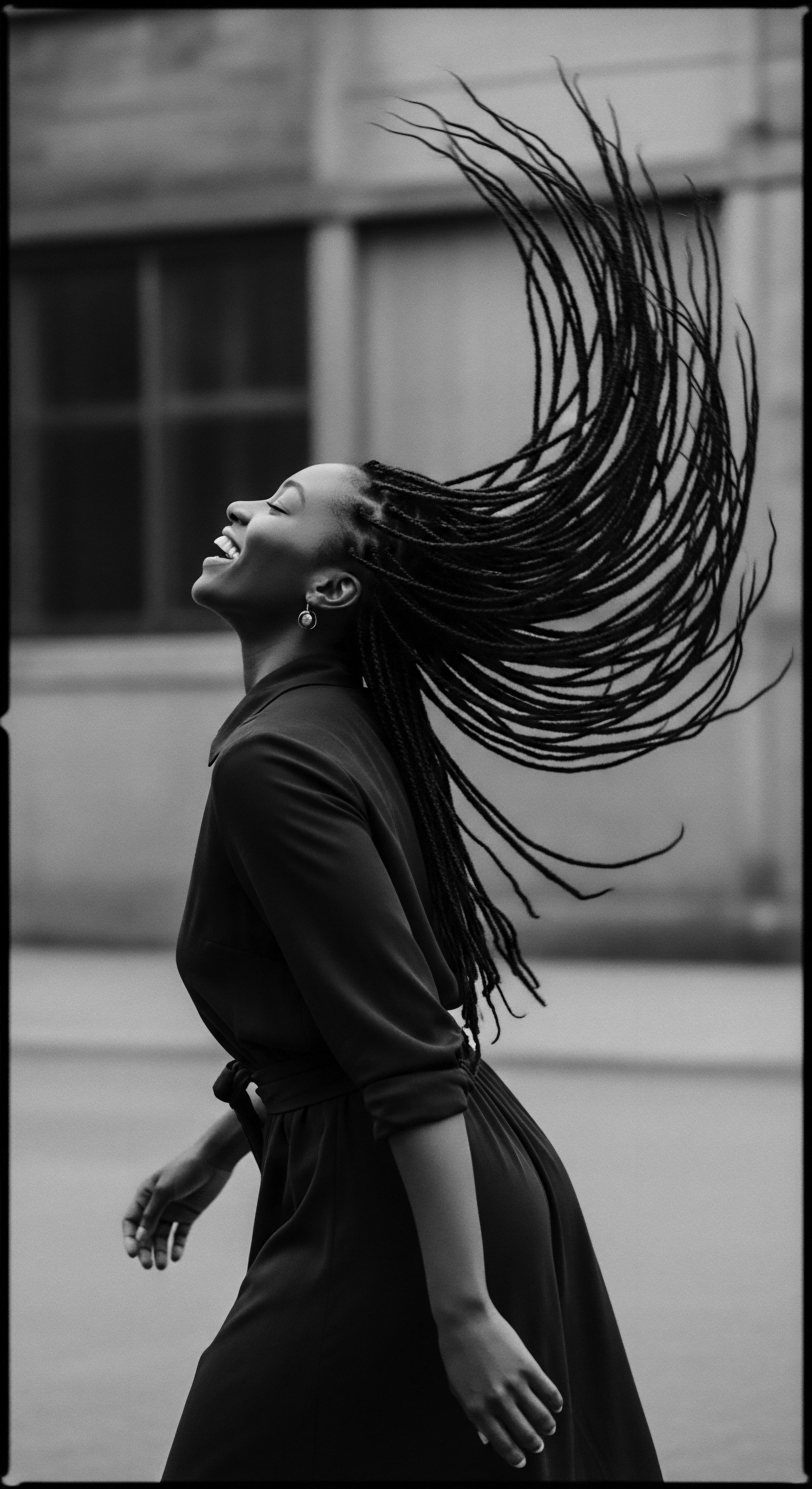
Ritual
From the foundational wisdom of hair’s very make-up, our path leads us to the rich tapestry of its care. Traditional textured hair rituals are more than just a sequence of steps; they represent a communal language, a transfer of generational knowledge, and a profound act of self-preservation. These practices, honed over centuries, address the specific needs of coiled, kinky, and curly strands, often anticipating the insights that modern scientific investigation now provides. It is within these living rituals that the deep wisdom of Black and mixed-race communities finds its most tangible expression.
Consider the practice of Pre-Shampoo Oiling, a common ritual in many traditions. Before cleansing, certain oils were applied to the hair and scalp, allowed to sit, and then washed away. Contemporary science affirms the protective role of this practice. Hair, especially textured hair with its porous nature, can absorb water during washing, causing swelling and potential stress on the hair shaft.
Oils, particularly those with smaller molecular structures, can coat the hair and even penetrate its cortex, reducing the amount of water absorbed during the wash process. This practice, therefore, scientifically minimizes Hygral Fatigue – the weakening of hair from repeated swelling and deswelling. The ancestral insight into oil’s protective qualities thus finds a direct correlation in modern trichology.
The intentional, repetitive actions of traditional hair care, from pre-shampoo oiling to protective styling, often mirrored nascent scientific principles of moisture retention and structural integrity, passed down without formal laboratories.

How Did Ancestral Hands Style and Protect?
The ingenuity of protective styling spans millennia. Before the advent of chemical relaxers or hot combs, which gained popularity under societal pressures to conform to Eurocentric beauty standards (Byrd and Tharps, 2001), communities created a diverse array of styles that inherently guarded hair from environmental elements and daily manipulation. Braids, twists, and locs, often adorned with cowrie shells, beads, or other natural elements, served as functional art.
These styles, beyond their aesthetic and communicative purposes, extended the periods between washing and detangling, thereby reducing physical stress on the hair shaft. Every tuck and coil served to minimize exposure to harsh sun, wind, or dust, preserving moisture and preventing breakage. Scientific understanding of hair breakage points to excessive manipulation, friction, and environmental exposure as culprits.
The protective styling traditions, therefore, offered an intuitive solution, demonstrating a practical understanding of hair mechanics. For example, some traditional styling practices involved using naturally occurring gums or plant-based gels to hold styles, providing a gentle hold that respected the hair’s natural elasticity, standing in contrast to the rigid holds sometimes sought in modern styling.
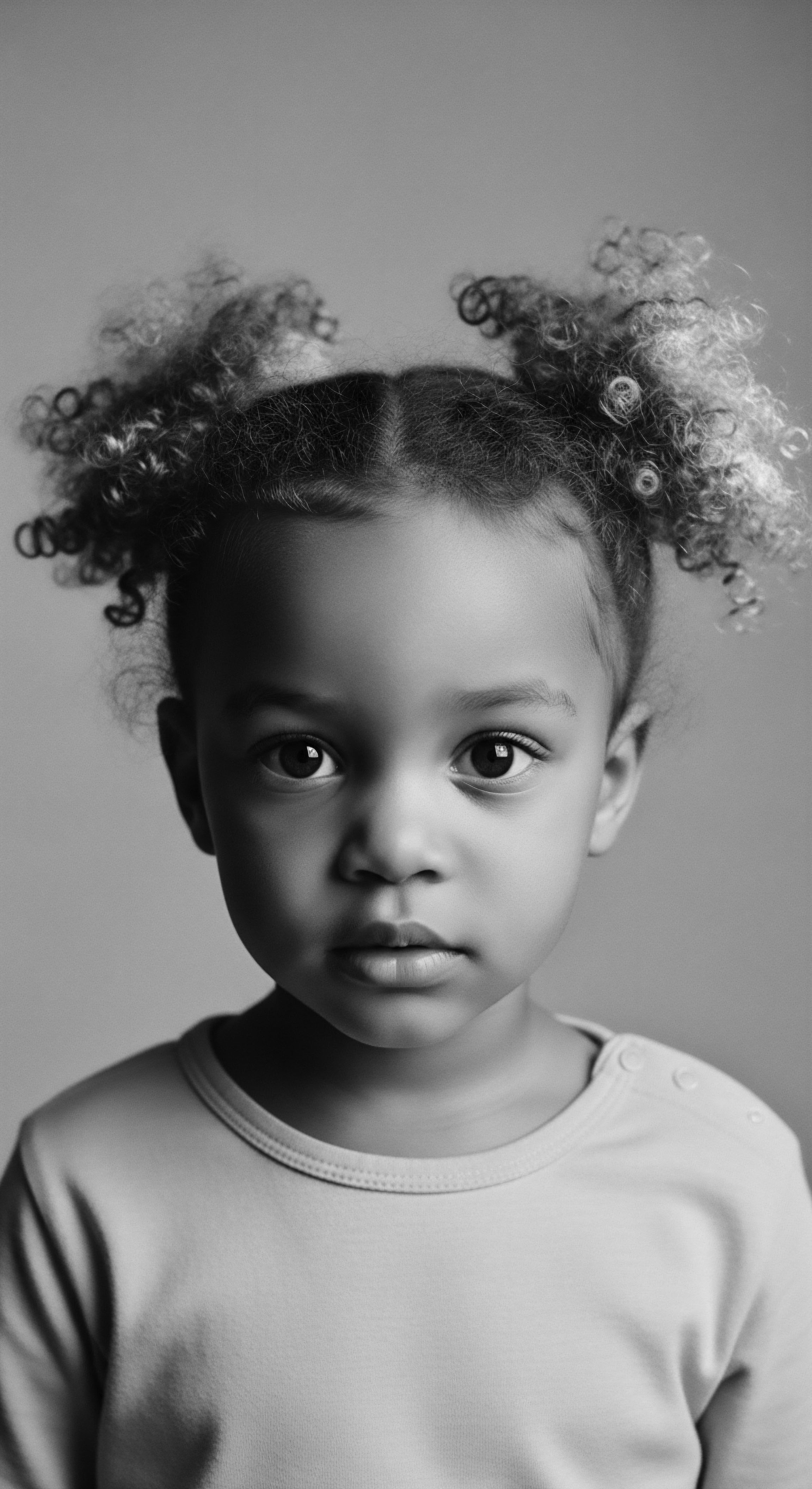
Tools of the Past, Wisdom for the Future?
The tools associated with traditional textured hair care were often simple, born of necessity and readily available materials. Wooden Combs with wide teeth, bone picks, or even fingers served as primary detangling implements. The gentle nature of these tools, coupled with the application of oils or water, minimized breakage during the often-challenging process of detangling coiled hair. Compare this to the harsh metal combs and brushes that sometimes accompany modern styling, which, without proper technique, can lead to significant mechanical damage.
Consider the significance of the communal detangling session. Often performed outdoors, under the shade of a tree, or in the intimate setting of a home, these sessions were not merely about untangling strands. They were spaces of teaching, healing, and connection. Older women instructed younger generations on the proper way to handle hair, to apply concoctions, to execute intricate patterns.
This direct transmission of knowledge, deeply embedded in social ritual, ensured the survival and adaptation of practices that were effective. The “know-how” was embodied, not codified in textbooks, yet its efficacy was undeniable through centuries of healthy, thriving hair.
| Tool or Material Wide-Tooth Combs |
| Traditional Application Used for gentle detangling, often with wet or oiled hair. |
| Scientific Principle Affirmed Minimizes mechanical stress and breakage on fragile, coiled strands by reducing friction. |
| Tool or Material Natural Plant Fibers |
| Traditional Application Incorporated into extensions, adding length or volume without harsh chemicals. |
| Scientific Principle Affirmed Provides a lightweight, breathable structure, allowing the scalp to 'breathe' and preventing excessive tension that can lead to traction hair loss. |
| Tool or Material Clay-based Cleansers |
| Traditional Application Applied as natural washes or masks for cleansing without stripping oils. |
| Scientific Principle Affirmed Clays absorb impurities while leaving natural lipids intact, supporting scalp microbiome balance and preventing dryness. |
| Tool or Material These ancestral tools and materials reveal an intuitive grasp of principles that modern hair science now painstakingly details, confirming a timeless wisdom in care. |

How Do Ancestral Hair Adornments Guard Hair Health?
The embellishment of hair with beads, cowrie shells, precious metals, or colored earth mixtures was, and remains, a practice rich with symbolism and practical wisdom. These adornments were often incorporated into protective styles, subtly reinforcing the underlying functional benefits. For example, the use of clay mixtures by some communities, applied to the hair for color or protection, also served as a natural sealant against moisture loss and potentially provided a barrier against environmental pollutants. While modern hair products employ complex polymers and silicones for similar purposes, ancestral formulations often achieved comparable results with ingredients sourced directly from the land.
The act of adorning hair often marked significant life passages ❉ coming-of-age, marriage, mourning, or elevation to a new social status. These transformations were accompanied by specific hair rituals, underscoring the deep connection between hair, identity, and community. The shared experience of preparing for such an event, often involving multiple hands working on one head, reinforced social bonds and the communal nature of textured hair care. It taught patience, skill, and the profound value of one’s heritage, all through the tangible medium of hair.
- Headdresses and Wraps ❉ Traditionally worn for cultural expression, protection from elements, or spiritual purposes. They minimize exposure to sun, wind, and pollution, physically shielding hair.
- Natural Hair Adornments ❉ Beads, shells, and sometimes woven fibers. They often served to secure braided or twisted styles, lending additional support and prolonging the life of protective styles, reducing the frequency of manipulation.
- Plant-Derived Pigments ❉ Used for coloring hair or scalp, often with conditioning properties. They offer a less damaging alternative to chemical dyes, aligning with principles of minimizing chemical exposure for hair integrity.
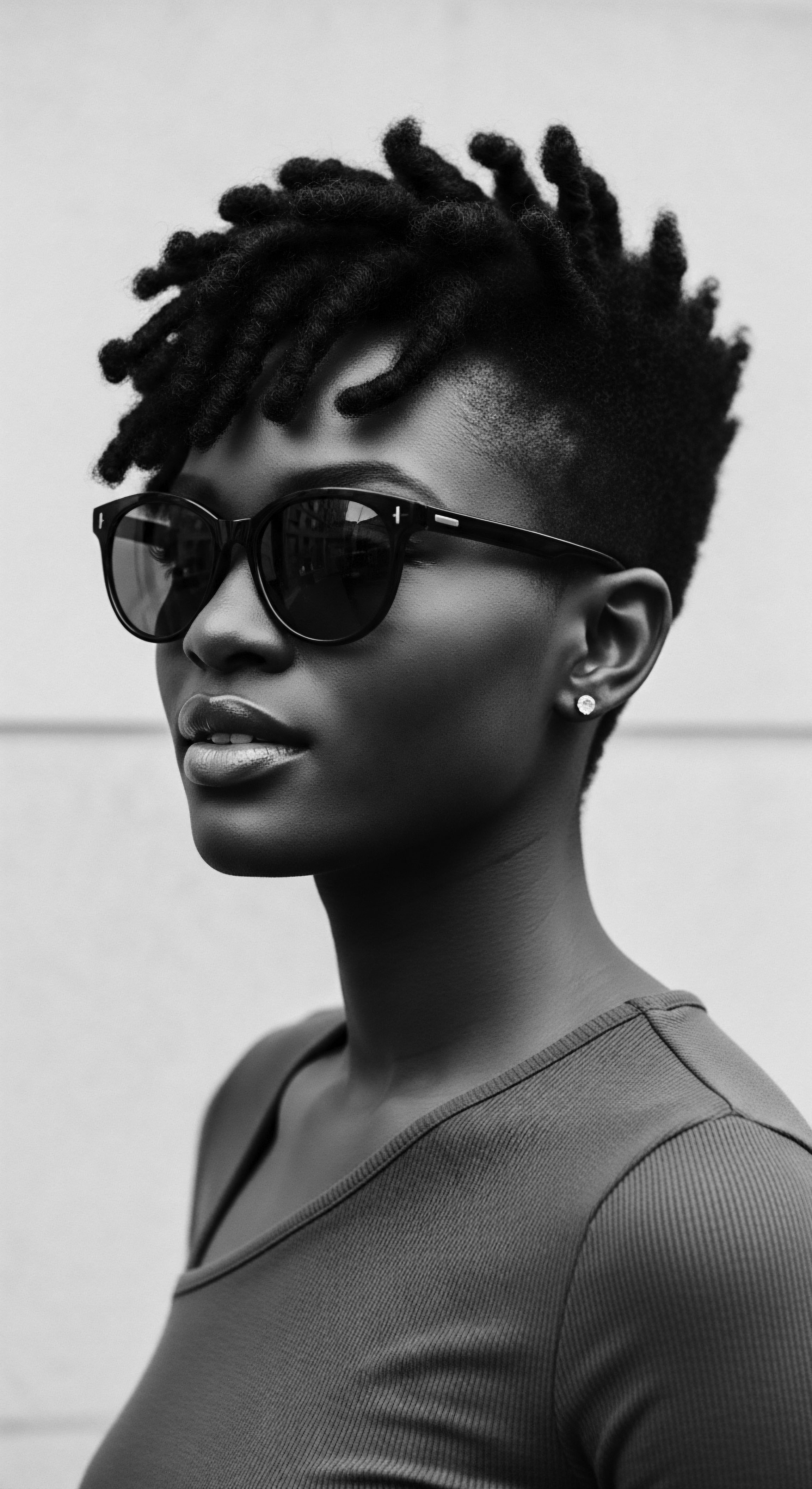
Relay
With the foundation of hair’s elemental biology and the intricate pathways of traditional ritual laid bare, we move into a deeper exploration. This section scrutinizes how scientific understanding, backed by rigorous studies and data, directly corroborates, explains, and sometimes expands upon, the enduring wisdom of traditional textured hair care. It demonstrates that the practices passed down through generations are not merely folklore; they are often sophisticated applications of principles now deciphered by contemporary science. This intersection offers a powerful testament to ancestral knowledge, positioning it as a valid, vital source of information in the wider discourse on hair health.
The very structure of textured hair – its helical shape and flattened elliptical cross-section – renders it more susceptible to mechanical damage than straight hair (MDPI, 2022). This inherent vulnerability made ancestral protective strategies not just desirable, but absolutely essential for hair preservation. When modern studies examine these traditional methods, the findings frequently align with their intended benefits.
The profound efficacy of ancestral textured hair care finds its clearest validation when modern scientific inquiry dissects the very mechanisms by which these age-old practices support the unique biology of coiled and kinky strands.
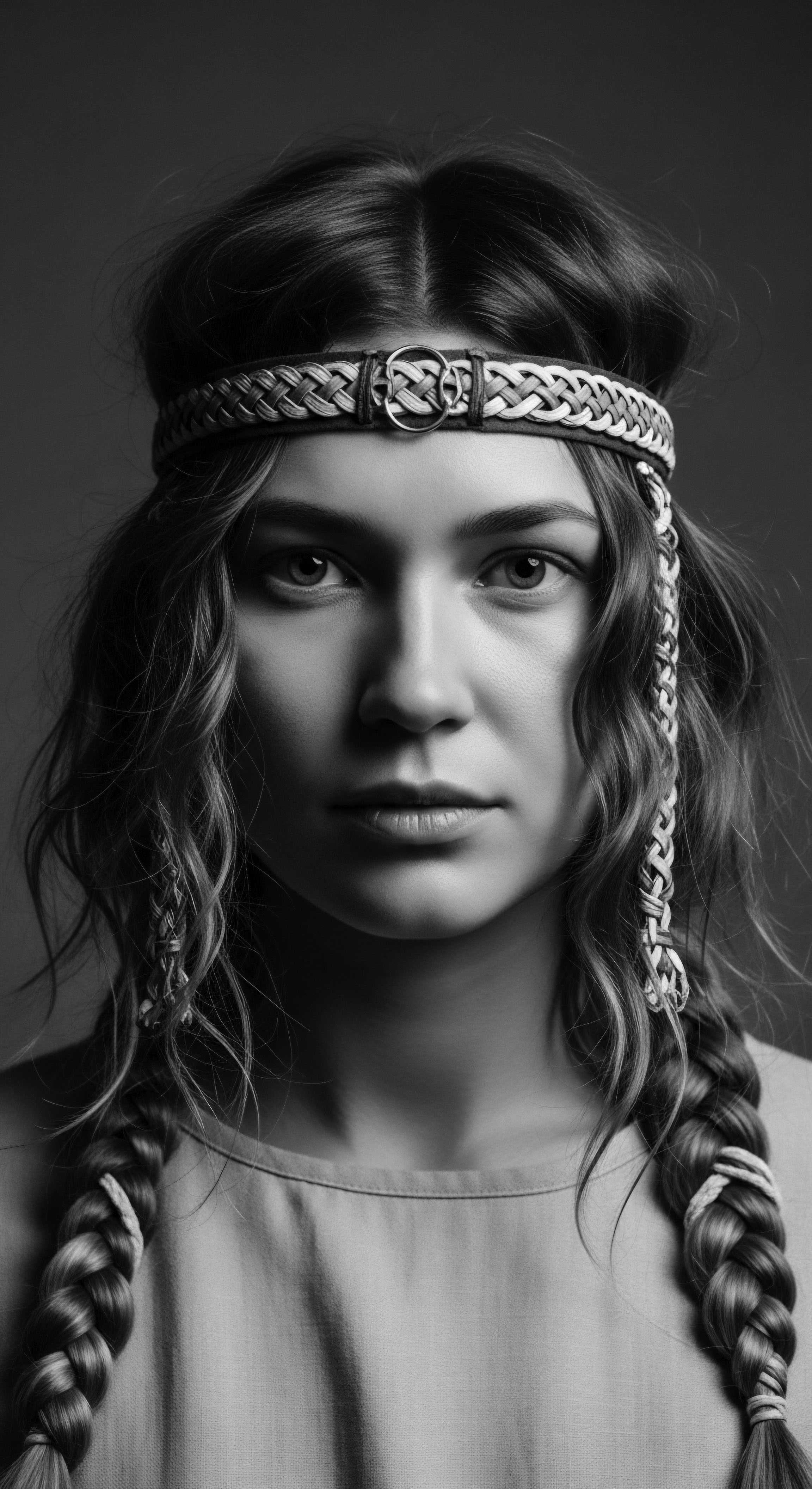
Can Scientific Inquiry Explain Hair’s Water Affinity?
One of the most widely acknowledged characteristics of textured hair is its propensity for dryness. Scientifically, this relates to several factors ❉ the cuticle structure, which may not lie as flat as in straight hair, allowing for greater moisture evaporation; the numerous bends and twists along the hair shaft, which create natural points of weakness and impede the smooth flow of naturally produced oils from the scalp down the strand; and variations in the hair’s lipid content (Physicochemical Properties of Textured Hair, 2021).
Traditional rituals often countered this dryness with consistent application of humectants and emollients. For example, the pervasive use of plant-based oils and butters, like Shea Butter or Coconut Oil, directly addresses this need. Research confirms that emollients form a protective barrier on the hair surface, reducing water loss and increasing lubrication, which in turn diminishes friction and breakage.
Studies on natural ingredients for textured hair often focus on their UV-protective and antioxidant capacities, noting the unique requirements for textured hair care products to shield hair shafts from environmental harm while enhancing natural fiber features (Markiewicz and Idowu, 2024). This mirrors the ancestral reliance on substances from their immediate environments that offered both nourishment and protection.

Do Traditional Cleansing Methods Support Scalp Health?
Conventional shampoos, often containing harsh sulfates, can strip the hair and scalp of their natural oils, exacerbating dryness in textured hair. Ancestral cleansing practices frequently relied on gentler, naturally derived cleansers. African black soap, for instance, made from plantain skins, cocoa pods, and shea butter, provides a mild cleansing action while imparting moisturizing benefits. Rhassoul clay, another traditional cleanser, functions by adsorbing impurities without stripping the hair’s natural oils (Katherine Haircare, 2023).
From a scientific perspective, these methods align with the understanding of maintaining a balanced Scalp Microbiome and preserving the hair’s natural lipid barrier. Over-cleansing or using harsh agents can disrupt this delicate ecosystem, leading to dryness, irritation, and potential scalp conditions. Traditional practices, in their gentle approach, intuitively avoided these pitfalls, supporting overall scalp health as a foundation for hair vitality.
The efficacy of various herbal remedies, such as rosemary, in promoting hair growth and addressing hair loss conditions is now explored through mechanisms like improved microcapillary blood flow and antioxidant properties (Karger Publishers, 2025). This aligns with the long-standing use of botanicals in traditional scalp preparations.
| Traditional Practice Oiling and Greasing |
| Ancestral Rationale (Observed) To soften hair, make it manageable, and prevent dryness. |
| Scientific Explanation (Mechanism) Lipids reduce water evaporation, lubricate the cuticle, and diminish friction, minimizing breakage (Physicochemical Properties of Textured Hair, 2021). |
| Traditional Practice Protective Styling (Braids/Twists) |
| Ancestral Rationale (Observed) To keep hair neat, signify status, and retain length. |
| Scientific Explanation (Mechanism) Reduces mechanical manipulation, protects from environmental stressors, and maintains moisture balance over extended periods (MDPI, 2022). |
| Traditional Practice Co-washing/Clay Washing |
| Ancestral Rationale (Observed) To cleanse without harshness, preserving hair's natural feel. |
| Scientific Explanation (Mechanism) Low-lather cleansers or adsorptive clays remove impurities gently, preserving natural oils and the scalp's microbial balance (Katherine Haircare, 2023). |
| Traditional Practice Nighttime Hair Wrapping |
| Ancestral Rationale (Observed) To maintain style, prevent tangles, and preserve warmth. |
| Scientific Explanation (Mechanism) Reduces friction against bedding, minimizing cuticle damage, breakage, and moisture loss during sleep (Journal of Cosmetic Science, 2021). |
| Traditional Practice The consistency between traditional hair wisdom and contemporary scientific findings offers compelling evidence of the empirical effectiveness of ancestral hair rituals for textured hair. |
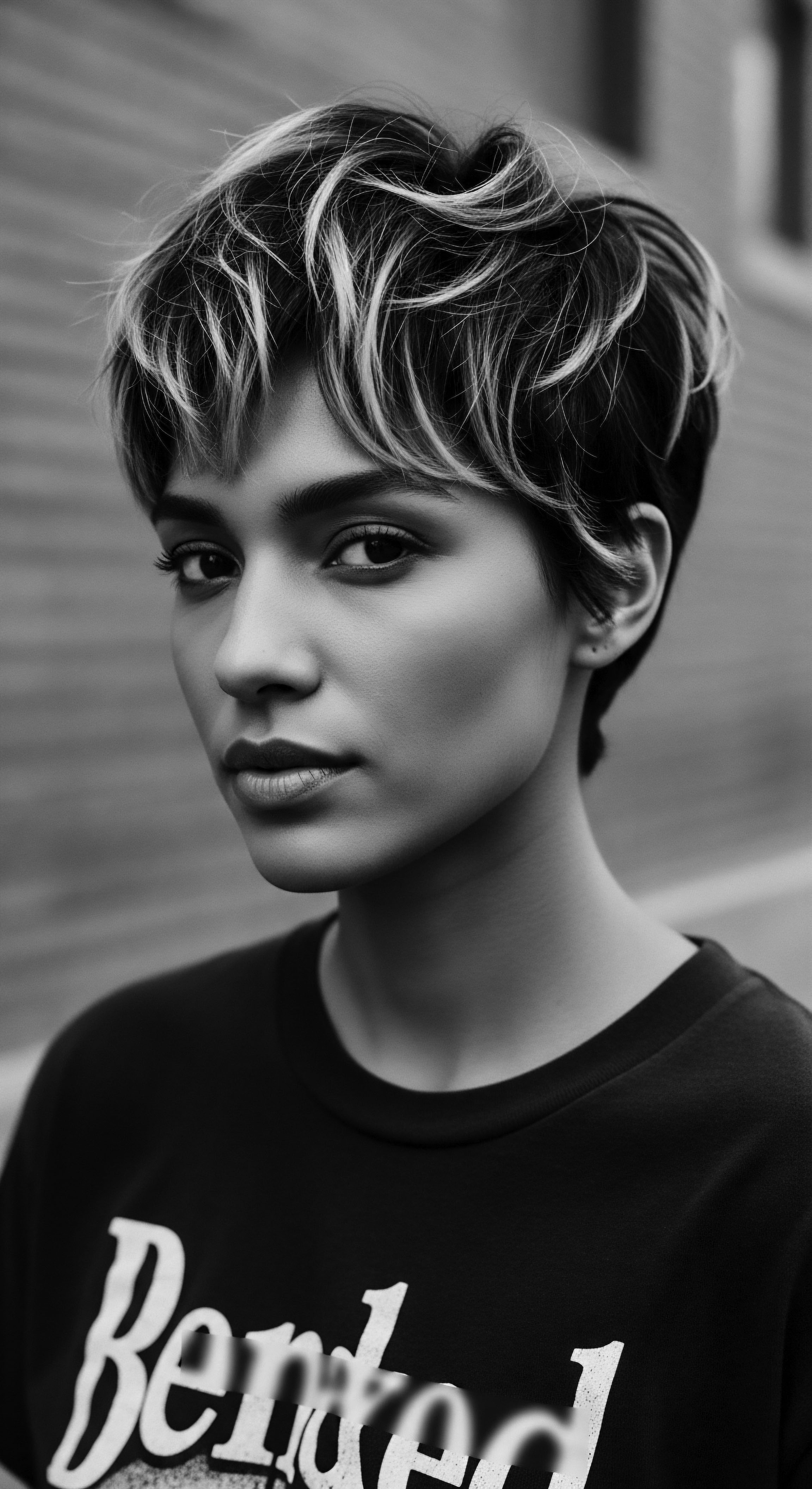
What Does Hair Elasticity Tell Us About Gentle Handling?
Textured hair possesses unique mechanical properties. Compared to straight hair, it often exhibits lower tensile strength and elongation at break, meaning it is more prone to fracture under tension (Physicochemical Properties of Textured Hair, 2021). This scientific insight provides a clear explanation for the historical emphasis on gentle handling.
Traditional detangling, for instance, often involved finger detangling or the use of wide-tooth combs, always with patience and the aid of water or oils. This approach minimizes the stress placed on individual strands, thereby reducing breakage.
The legacy of such careful handling extends to styling. While certain tight styles, when sustained over long periods or executed with excessive tension, can contribute to Traction Alopecia (a form of hair loss due to repetitive pulling), the original intent of many traditional protective styles was often to preserve hair by minimizing daily manipulation. It points to a delicate balance, where the cultural artistry of hair required a sensitive hand, a practice validated by the hair shaft’s inherent fragility.
- Natural Hair Masks ❉ Recipes often include eggs, yogurt, honey, and specific plant extracts. These ingredients supply proteins, humectants, and conditioning agents that strengthen hair structure, attract moisture, and smooth the cuticle, aligning with modern deep conditioning principles.
- Scalp Massage ❉ Incorporated into oiling rituals, often for relaxation and hair growth. It enhances local blood circulation, which supports nutrient delivery to hair follicles, a known factor in stimulating healthy hair growth.
- Hair Steaming (Natural Humidification) ❉ Sometimes achieved through warm wraps or humid environments during treatment. Warm moisture lifts the hair’s cuticle, allowing deeper penetration of conditioners and oils, a principle employed in modern salon treatments to maximize product efficacy.
Moreover, the application of botanical ingredients, long a staple of traditional hair care, is increasingly gaining scientific attention. A review of African plants used in hair treatment notes 68 species as treatments for issues such as alopecia and dandruff, with 30 of these having research linked to hair growth or care (Cosmetopoeia of African Plants in Hair Treatment and Care, 2024). This body of research, although sometimes focused on single-target mechanisms, lends credibility to the traditional belief in plants’ restorative powers.
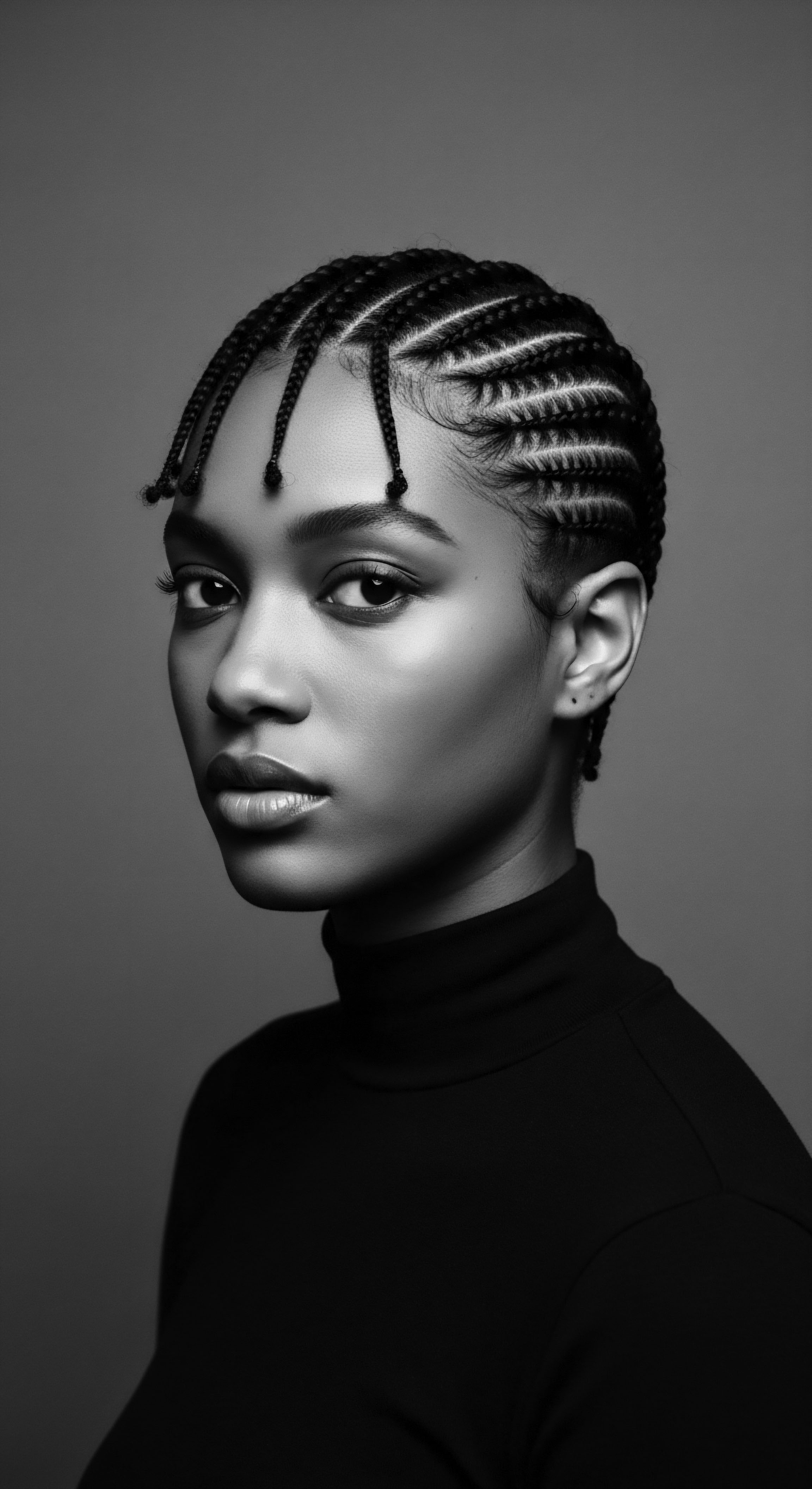
Reflection
Our journey through the terrain of textured hair heritage reveals a profound and continuous conversation between ancient wisdom and contemporary scientific understanding. The initial question, can science validate traditional rituals, finds its answer not in a simple ‘yes’ or ‘no,’ but in a vibrant dialogue, a dance of confirmation and deepened appreciation. The intuitive practices passed down through the ages by Black and mixed-race communities were not mere superstition; they were often empirical solutions, deeply attuned to the unique biology of coiled and kinky hair. The collective knowledge of these ancestral practices, refined over centuries of lived experience, offers an enduring testament to human ingenuity and the persistent pursuit of wellness, beauty, and identity.
The strands that crown us carry echoes from the source – the elemental biology that shaped hair as a protective shield. They form a tender thread, weaving community, care, and cultural narrative through every ritual. And they project an unbound helix, symbolizing not just our past, but also our future, a future where heritage is honored, understood, and amplified by the clarity of scientific insight.
This reciprocal relationship reminds us that true authority resides not solely in laboratory findings, but also in the lived wisdom of generations, particularly in traditions that have endured adversity and continued to nourish identity. The spirit of Roothea, the ‘Soul of a Strand,’ resides in this very recognition ❉ that our hair is a living archive, each coil and curve holding stories, knowledge, and a legacy waiting to be understood, celebrated, and cared for with reverence.

References
- Byrd, Ayana D. and Lori L. Tharps. Hair Story ❉ Untangling the Roots of Black Hair in America. St. Martin’s Press, 2001.
- Caffrey, Cait. “Afro-textured hair.” EBSCO Research Starters, 2023.
- Dabiri, Emma. Twisted ❉ The Tangled History of Black Hair Culture. Harper Perennial, 2020.
- “Cosmetopoeia of African Plants in Hair Treatment and Care ❉ Topical Nutrition and the Antidiabetic Connection?” ResearchGate, 2024.
- “Herbal Remedies for Hair Loss ❉ A Review of Efficacy and Safety.” Karger Publishers, 2025.
- Loussouarn, G. “African Hair Growth Parameters.” British Journal of Dermatology, vol. 145, no. 2, August 2001, pp. 294–297.
- Markiewicz, Ewa, and Olusola Clement Idowu. “Exploring the Use of Natural Ingredients for Textured Hair UV Protection.” Cosmetics, vol. 11, no. 2, 2024.
- “Physicochemical Properties of Textured Hair.” Journal of Cosmetic Science, vol. 72, November/December 2021, pp. 711–731.
- “Porosity and Resistance of Textured Hair ❉ Assessing Chemical and Physical Damage Under Consumer-Relevant Conditions.” MDPI, 2022.
